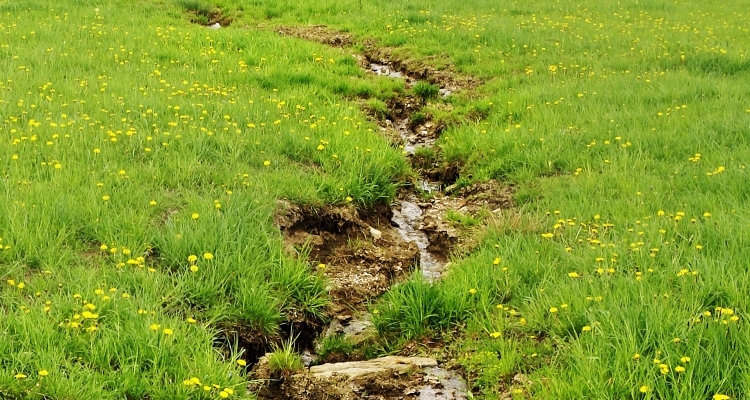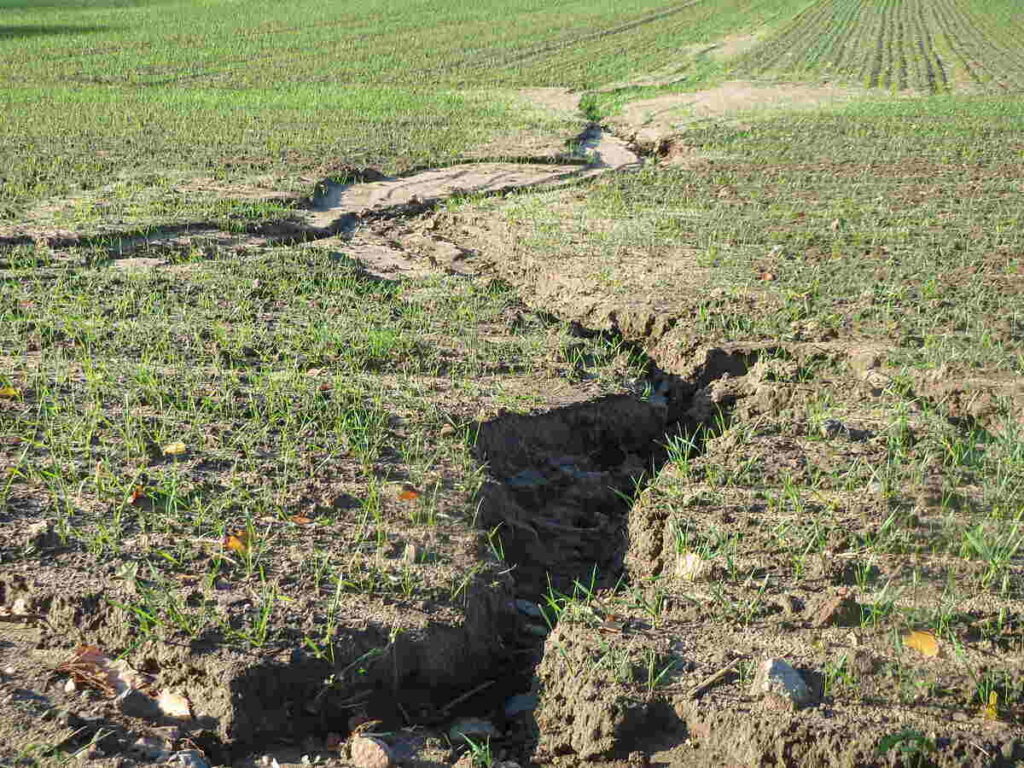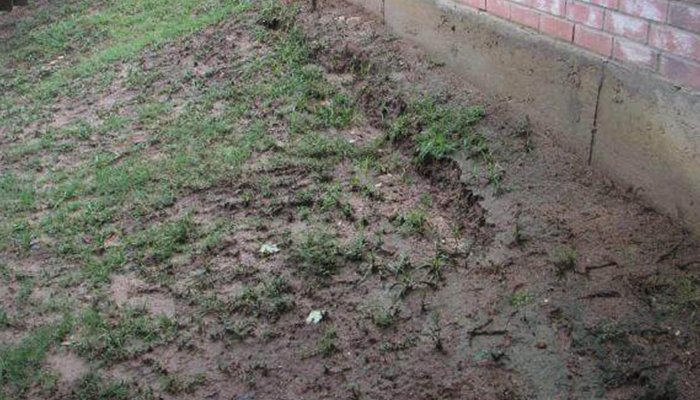Soil erosion in your yard might seem like a minor issue, but left untreated, it can lead to serious landscaping problems and property damage. Whether you’re noticing bare patches of earth, exposed tree roots, or muddy puddles after rain, these can all be signs of erosion eating away at your yard.
In this blog, we’ll break down how to spot soil erosion in your yard early, why it happens, and the best ways to fix and prevent it for good.


What Is Soil Erosion?
Soil erosion is the gradual removal of the top layer of soil by natural forces like wind, rain, and runoff. In a well-maintained yard, the soil should stay in place, anchored by healthy grass, plants, and proper drainage. But when these systems fail, erosion can set in—leading to unsightly and even dangerous damage.
How to Spot Soil Erosion in Your Yard
1. Exposed Roots or Foundation
If you can see tree or plant roots that were once buried, it’s a red flag. Soil erosion slowly removes the topsoil around them. Similarly, exposed parts of your home’s foundation can mean soil is washing away.
2. Bare Patches in Grass or Landscape
Areas where grass no longer grows, especially on slopes, often indicate the topsoil has eroded. These patches might be dusty in dry conditions and turn to mud when it rains.
3. Runoff and Standing Water
After rainfall, do you notice water streaming through certain parts of your yard or pooling in others? That’s a sign your soil isn’t absorbing water properly, likely due to compaction or previous erosion.
4. Small Gullies or Dips in the Ground
Over time, water runoff carves small channels into your lawn. These “mini-valleys” may seem harmless at first but will worsen if not addressed.
5. Sediment on Driveways or Sidewalks
Look at the areas near your hardscaping after heavy rain. If you see muddy deposits or sand-like buildup, erosion is washing your soil away.
What Causes Soil Erosion in Yards?
Understanding the causes of erosion is key to stopping it. Common culprits include:
Poor drainage: Water doesn’t flow properly and erodes soil.
Overwatering or heavy rain: Causes soil compaction and runoff.
Lack of ground cover: Bare soil is more vulnerable to wind and rain.
Improper grading or slope: Directs water flow too forcefully.
How to Fix Soil Erosion in Your Yard
1. Plant Grass and Ground Cover
One of the easiest ways to fix and prevent erosion at home is to plant vegetation. Grass, clover, ivy, and other ground covers hold soil in place with their roots.
For slopes, use deep-rooted plants like ornamental grasses.
Consider native plants, which are better suited to local conditions and require less maintenance.
2. Use Mulch or Erosion Control Blankets
Mulch helps protect soil from rain impact while maintaining moisture. On steeper slopes or large bare areas, erosion control blankets (made of coir, jute, or straw) offer a more secure fix.
3. Create Terracing or Retaining Walls
In hilly yards, building terraces or using retaining walls can reduce water flow and prevent further erosion. These structures break up the slope, slowing water and keeping soil intact.
4. Improve Drainage Systems
Install downspout extensions, French drains, or dry creek beds to redirect water away from vulnerable areas. Proper drainage is crucial to how to fix soil erosion permanently.
5. Add Organic Matter to Soil
Compost and other organic matter improve soil structure, helping it absorb water better and resist compaction. Aerate your lawn and amend the soil to promote healthy plant growth and prevent future erosion.
How to Prevent Erosion in the Future
Once you’ve addressed the immediate problem, prevention is the next step:
Water wisely: Avoid overwatering and use drip irrigation or soaker hoses.
Maintain ground cover: Keep vegetation healthy and replace bare spots quickly.
Check drainage regularly: Make sure gutters, downspouts, and drains are clear.
Re-grade problem areas: Slight adjustments to slope can redirect water safely.
Final Thoughts
Soil erosion in your yard doesn’t just affect curb appeal—it can damage plant life, harm property value, and even lead to costly repairs. The good news? Spotting early signs and knowing how to fix soil erosion can save you time, money, and effort.
By planting wisely, improving drainage, and maintaining healthy soil, you can prevent erosion at home and enjoy a beautiful, stable yard year-round.


